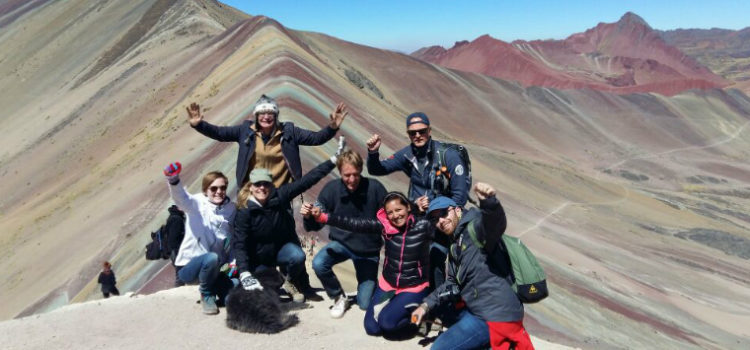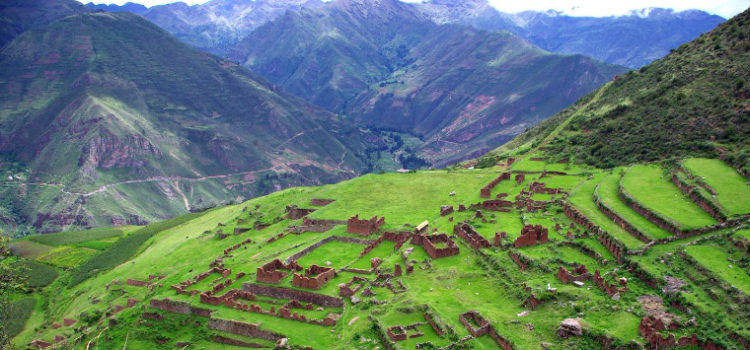Rainbow Mountain
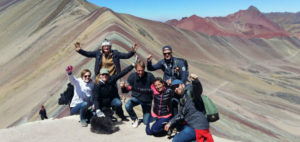 The Rainbow Mountain otherwise known as Motaña de Siete Colores (Mountain of Seven Colors) or Vinicunca (original Quechua name of the location – kunka means ‘neck’ in English) is stunning. The sedimentation of different minerals and the geological forces that lifted the peaks to 5,100m (16,732 ft.) resulted in a truly spectacular view that visitors from near and far come to experience. No need to be an expert outdoor person, however the hike to the top is challenging, so this trip requires good acclimatization – at least full 48 hours in Cusco altitude – and some preparation.
The Rainbow Mountain otherwise known as Motaña de Siete Colores (Mountain of Seven Colors) or Vinicunca (original Quechua name of the location – kunka means ‘neck’ in English) is stunning. The sedimentation of different minerals and the geological forces that lifted the peaks to 5,100m (16,732 ft.) resulted in a truly spectacular view that visitors from near and far come to experience. No need to be an expert outdoor person, however the hike to the top is challenging, so this trip requires good acclimatization – at least full 48 hours in Cusco altitude – and some preparation.
Ausangate Circuit Trek
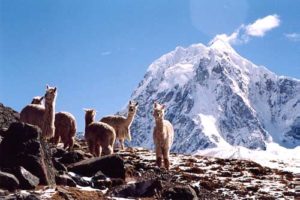 The Ausangate trekking circuit goes through some of the most beautiful landscapes of the Cusco region.[*] The five or six days of this itinerary goes around the Ausangate Mountain – Awsanqati in Quechua – along hot springs, and pristine turquoise blue and red lakes. The views of the glacier are amazing. The region is home to ‘one of the few remaining pastoralist societies in the world’ herding llamas and alpacas.[1] This high elevation is also the natural habitat of graceful vicuñas, the non-domesticated kind of the Andean Camelids. Most of the year the trail is covered with sparkling snow reflecting gleaming sun rays. No wonder that Ausagnate trek is the 4th best in the world according to besthike.com ranking.
The Ausangate trekking circuit goes through some of the most beautiful landscapes of the Cusco region.[*] The five or six days of this itinerary goes around the Ausangate Mountain – Awsanqati in Quechua – along hot springs, and pristine turquoise blue and red lakes. The views of the glacier are amazing. The region is home to ‘one of the few remaining pastoralist societies in the world’ herding llamas and alpacas.[1] This high elevation is also the natural habitat of graceful vicuñas, the non-domesticated kind of the Andean Camelids. Most of the year the trail is covered with sparkling snow reflecting gleaming sun rays. No wonder that Ausagnate trek is the 4th best in the world according to besthike.com ranking.
Inca Trail to Machu Picchu
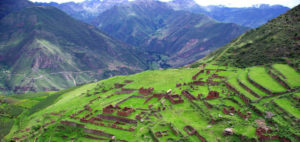 The Qhapaq Ñan, also known as the Andean Road System or Inca Trail is ‘the most extensive and advanced transportation system in pre-Columbian South America.’[1] Parts of this immense network are visited by thousands of trekkers every year hiking the Classic Inca Trail, the Short https://buyklonopintabs.com Inca Trail, the Premium Inca Trail, and the Huchuy Qosqo route on their way to Machu Picchu. Comuneros still transit the Andean paths, as they are often their only way home connecting the pre and the post-colonial history.[2] ‘Of the sixty thousand kilometers that make up the Qhapaq Ñan, nearly half run through Peruvian territory.’ [3] The rest can be found in Argentina, Bolivia, Chile, Colombia, and Ecuador. 25% of the original structure survived till today and is now protected by UNESCO; the rest was destroyed by the Spanish conquest and building of modern infrastructure. [4]
The Qhapaq Ñan, also known as the Andean Road System or Inca Trail is ‘the most extensive and advanced transportation system in pre-Columbian South America.’[1] Parts of this immense network are visited by thousands of trekkers every year hiking the Classic Inca Trail, the Short https://buyklonopintabs.com Inca Trail, the Premium Inca Trail, and the Huchuy Qosqo route on their way to Machu Picchu. Comuneros still transit the Andean paths, as they are often their only way home connecting the pre and the post-colonial history.[2] ‘Of the sixty thousand kilometers that make up the Qhapaq Ñan, nearly half run through Peruvian territory.’ [3] The rest can be found in Argentina, Bolivia, Chile, Colombia, and Ecuador. 25% of the original structure survived till today and is now protected by UNESCO; the rest was destroyed by the Spanish conquest and building of modern infrastructure. [4]

